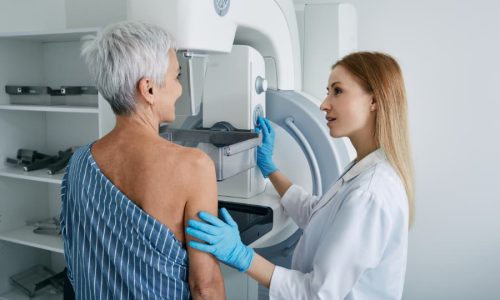
New Jersey Cancer Care Joins Regional Cancer Care Associates
Affiliation provides oncology practice with expanded resources as it pursues its commitment to providing patients with the latest therapies and best possible outcomes.
HIPAA Alert: Potential Data Breach Learn More
Questions on Oncology, Hematology and/or Infusion Clinical Services due to COVID-19 Crisis – CALL 833-698-1623
Important Information for Our Patients Regarding the Coronavirus.
RCCA Providing Area Cancer Patients with Access to Care During Coronavirus Outbreak
RCCA Offering Patients Virtual Visits During Coronavirus Pandemic
Just thirty minutes is all that is needed to help detect early signs of breast cancer. This is the amount of time a standard mammogram procedure takes. Mammograms are an effective breast cancer screening tool used by healthcare providers to locate abnormal areas in the breast or breast tissue. Breast cancer found early — before it has spread to other parts of the body — is easier to treat successfully. Therefore, detecting breast cancer in its early stages is crucial for reducing breast cancer mortality.
The dedicated cancer care team at Regional Cancer Care Associates (RCCA) aims to assist patients in New Jersey, Connecticut, Maryland, and the Washington, D.C., area dealing with or recovering from breast cancer. Here, we explain the importance of mammogram screenings and what to expect during the procedure.

A mammogram is a low-dose X-ray of breast tissue. It is an essential screening tool, sometimes detecting signs of cancer up to three years before a tumor can be felt. A patient having a mammogram stands in front of a special X-ray machine. A technologist carefully positions the patient’s breasts on a plastic support plate. Another plate called a paddle is used to firmly press the breast from above, flattening it. Patients must remain still while the X-ray is being taken. Each compression lasts only 20 to 30 seconds.
Although necessary, the compression portion of the mammogram can be uncomfortable for some patients. Compressing and successfully flattening the breast provides a clearer view of the breast and reduces the amount of radiation needed to obtain an image.
The steps of the mammogram procedure are repeated to obtain a side view of the breast. The same approach is then repeated to obtain images of the other breast. A radiologist then will examine the mammogram X-rays, checking for any abnormalities that might indicate early signs of breast cancer or other concerns.
After skin cancer, breast cancer is the most common cancer diagnosed in females. Cancer in the breast represents 14 percent of all new cancer diagnoses in the United States. While breast cancer treatments continue to advance and improve, early diagnosis through mammogram screenings remains a main contributor to reducing cancer-related deaths.
While mammograms can detect signs of breast cancer, they are not a diagnostic tool in the strictest sense of the term. Rather, they are a screening tool used to identify potential concerns that warrant further evaluation. Subsequent testing, such as examination of a tissue sample obtained from a biopsy, is required to make a definitive diagnosis of breast cancer. However, mammography is a critical first step in the process of early detection and diagnosis.
Organizations like the American Cancer Society and the American College of Radiology recommend that all women who have an average risk of developing breast cancer should begin yearly mammogram screenings at age 40. Anyone with an increased risk of developing breast cancer may be recommended to start mammograms at an earlier age.
Patients with the following risk factors should speak to their healthcare provider about the right time to start getting annual mammogram screening:
Whether a patient has never had a mammogram or has been getting one for years, knowing how to prepare is important to ensuring the procedure goes smoothly. Tips for having your mammogram include:
More than three million breast cancer survivors are living in the United States. Regional Cancer Care Associates aims to ensure that eve n more patients survive breast cancer by delivering exceptional treatments and cancer care support to all who walk through its doors. The medical oncologists of RCCA have the knowledge, experience, commitment, and compassion needed to provide patients with personalized care. They employ the most advanced treatment methods in state-of-the-art facilities, serving patients at more than 20 locations throughout New Jersey, Connecticut, Maryland, and the Washington, D.C., area. For more information about mammograms, or to learn more about oncology services, contact Regional Cancer Care Associates today or request an appointment.
For more information or to schedule an appointment,
call 844-346-7222. You can also schedule an appointment by calling the RCCA location nearest you.

Affiliation provides oncology practice with expanded resources as it pursues its commitment to providing patients with the latest therapies and best possible outcomes.

Commitment, dedication and passion are attributes that show through in every aspect of care at Regional Cancer Care Associates.

Recent research has caused many healthcare professionals to reconsider their approach to screening men for prostate cancer. That’s because the disease (already the second most

Regional Cancer Care Associates is one of fewer than 200 medical practices in the country selected to participate in the Oncology Care Model (OCM); a recent Medicare initiative aimed at improving care coordination and access to and quality of care for Medicare beneficiaries undergoing chemotherapy treatment.